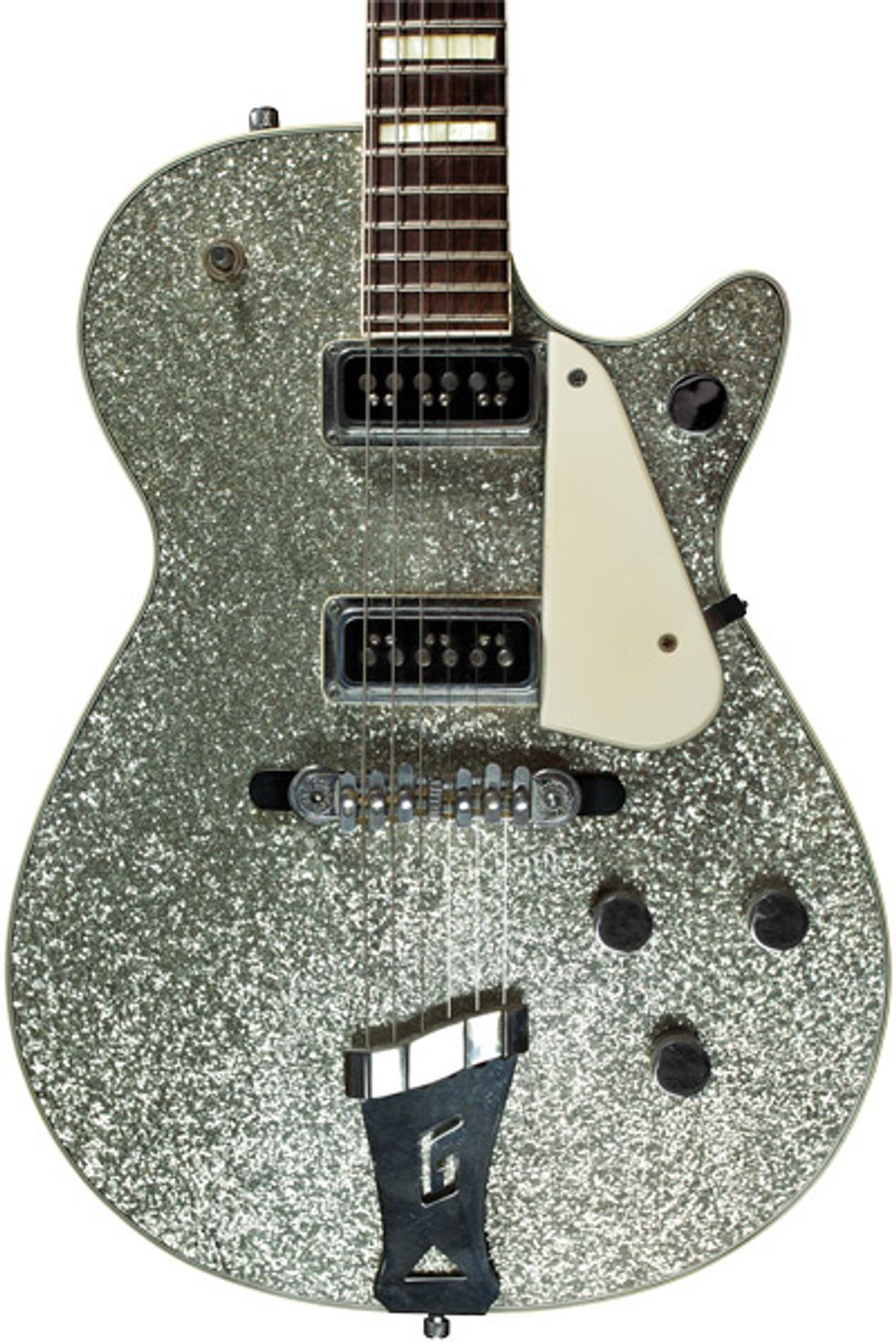
A close-up of the DeArmond Dynasonic-equipped 1954 Silver Jet. Courtesy of Matt Riz/Photo by Rachel Thoele
In the summer of 1953, the Gretsch Company responded to the new threat of solidbody electric guitars from both Gibson and Fender with its own offering—the Gretsch Duo Jet model 6128. With its dual DeArmond Dynasonic pickups, the 6128 possessed contours that were clearly inspired by the Gibson’s highly successful Les Paul model introduced in 1952. The Duo Jet was also the first Gretsch electric model to facilitate truss-rod adjustments via a headstock mechanism concealed by a bullet-shaped cover. Unlike the Les Paul’s metallic “goldtop” finish, the Gretsch Duo Jet featured a black top made of Nitron plastic. And although it was considered a solidbody instrument, it in fact employed a chambered body that reduced weight and contributed to the model’s signature tone.
Upon returning to production after World War II, the Gretsch factory in Brooklyn, New York, initiated a sequential serial-numbering system that marked instruments with stamped paper labels that were applied inside the guitars. Jet solidbodies’ labels were inside the large control cavity in the back of the guitar. A unique feature not shared by other Gretsch models is the fact that the Duo Jet also had its serial number handwritten on the outside edge of the black plate covering the large control cavity. This was done to relieve the retailer from having to remove the plate to document the number.
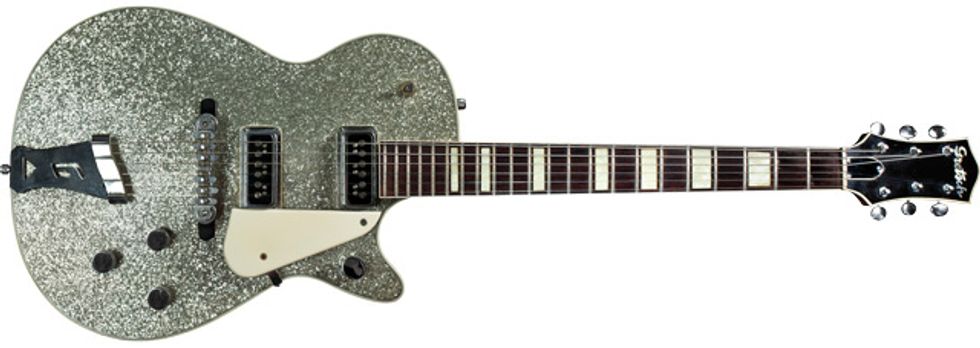
A rare example of an early 1954 Gretsch Silver Jet from the fi rst production batch to include the
sparkly variation on the Duo Jet design. Guitar Courtesy of Matt Riz/Photo by Rachel Thoele
Birth and a Sparkly Evolution
The Gretsch factory was known to have produced guitars in batches, typically 50 or 100 units of a particular model at a time. However, the debut 6128 batch consisted of 150 units with serial numbers from 11900 to 12049. These are considered the sole examples of 1953-model-year Duo Jets. The identifying feature of these debut-batch Duo Jets is the “script”-style logo inlaid on their headstocks—a carryover from the company’s Synchromatic guitar line, which had a similar type style in its headstock logos. The limited production of these 1953 script-logo Duo Jets makes them quite popular with collectors.
The second batch of Duo Jets also had 150 units (serial numbers 12950–13099). These are considered the first of the 1954 model year. These ’54 Jets featured a new inlaid headstock logo commonly referred to as the Gretsch “T-roof ” logo. Included in this batch was a new iteration of the Jet solidbody known as the Silver Jet model 6129. This variation on the Duo Jet theme featured a lustrous silver-sparkle top made from the same material that the Gretsch factory used to cover drum shells. This model represents the first example of the Jet solidbody format expanded with new finish options. Subsequent Jet solidbody batches would be produced with a mix of both model 6128 Duo Jets and model 6129 Silver Jets.
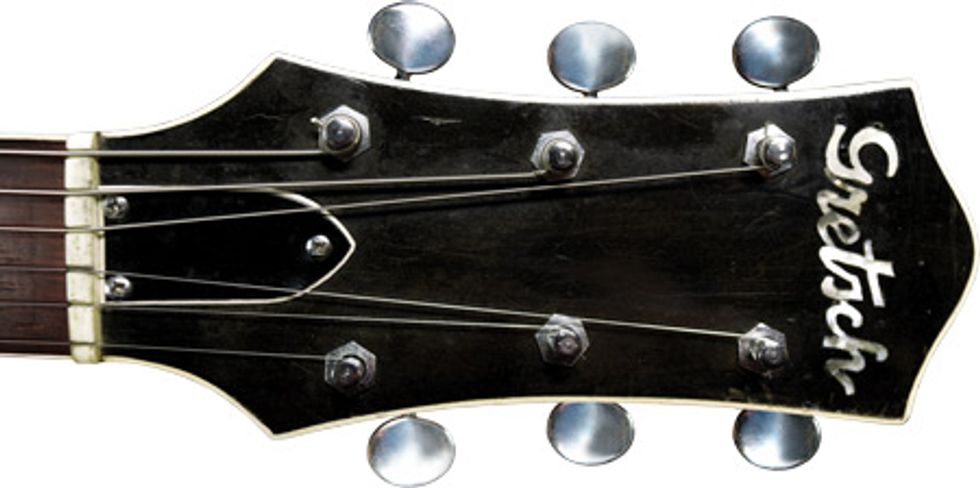
The second batch of Jets included the new Gretsch “T-roof” logo inlay. Courtesy of Matt Riz/Photo by Rachel Thoele
The ’54 Silver Jet above is serial number 12955—just six units into the batch—and it might just be the first example of the Silver Jet ever produced. It displays a model stamp on it’s interior label of 6128, with a hand-penciled “S” next to it, suggesting that the 6129 model stamps prevalent in later specimens of this model were not yet available. But the most exciting aspect of this amazing guitar is the fact that it retains the script-logo headstock motif thought to have been abandoned after the ’53 debut batch. But recent research confirms that Duo Jet number 12951 also displays the script-logo headstock, corroborating the fact that the first few specimens from this second Jet solidbody production batch apparently received the last of the script-logo headstocks. Research also shows that the switch to the new-for-’54 T-roof headstock motif was complete by serial number 12958, which means this holy grail Silver Jet is one of the last guitars to receive the script logo on its headstock.
So this Silver Jet, plausibly the first of its 6129 kind, might simultaneously be the last of its kind relative to the script-logo headstock. It remains to be seen if any of the other eight guitars from the beginning of that second batch (serial numbers 12950– 12957) were Silver Jets with the rare script-logo headstock. Regardless, this specimen is a unique and historically significant instrument coveted by many Gretsch aficionados.

This rare example of a 1957 Jet (serial number 25545) has all the characteristics of the fi rst Cadillac-green batch, including standard 6128 Duo Jet labels and August 1957 potentiometer codes. Photo courtesy of Billy Straus
Firebirds and Cadillacs
In the 1955 model year, Gretsch designers expanded the Jet solidbody options again with the introduction of the Jet Firebird model 6131. Sharing identical features and hardware with its siblings, this variation offered an Oriental red top finish and black back and sides. This model went on to be associated with the great Bo Diddley, who could be seen playing it on the cover of his 1959 album Go Bo Diddley.
Upon this third finish option’s inclusion in the Jet solidbody lineup, all subsequent Jet batches included all three models (6128, 6129, and 6131). These guitars would represent the Jet solidbody offering until sometime in late 1957, when Gretsch introduced two special limited-run mini batches with a new finish and a different hardware package. These mini batches began with serial numbers 255XX and 262XX, and they consisted of Jet solidbodies with a Cadillac-green finish that previously had been exclusive to the company’s Country Club model 6196 electric archtop. In addition to this new finish, the hardware on guitars in these mini batches was gold-plated—an upgrade option not available on the other three existing Jet models. These Cadillac green Jets have labels with the standard 6128 Duo Jet model stamp, and their potentiometer codes date from August 1957. Another unique feature on many (if not all) of these Cadillac-green Jets is a banjo-style armrest, an accoutrement only shared with the legendary White Penguin model 6134—which, perhaps not-so-coincidentally, was produced in batch 263XX immediately after the second mini batch of Cadillac-green Jets.
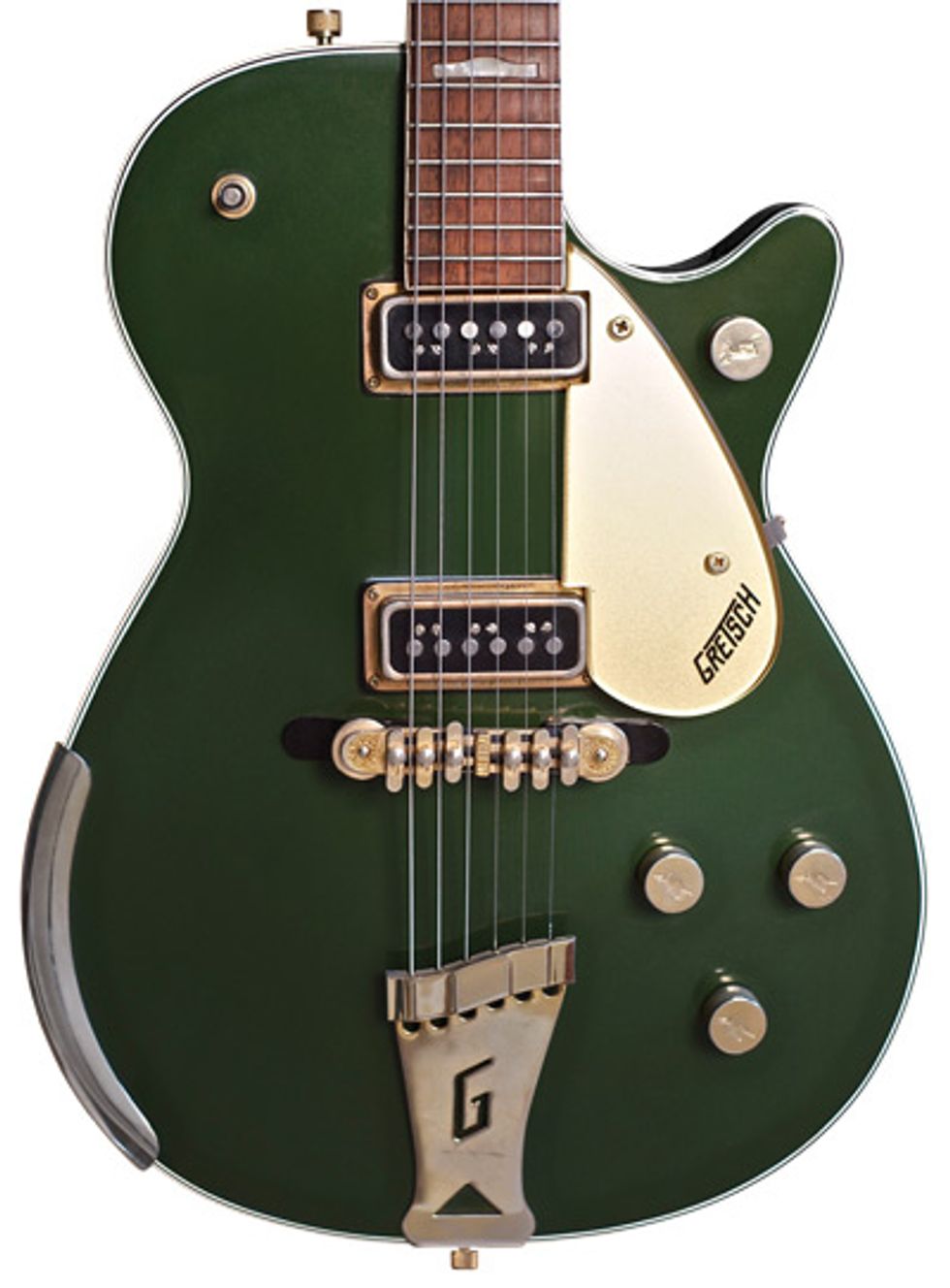
The Cadillac-green fi nish on certain 1957 Jets had previously only been available on Gretsch Country
Club 6196 models, while the armrest also appeared on White Penguin 6134 models that were produced
immediately after the batch this specimen came from. Photo courtesy of Billy Straus
Because of their relative rarity—only 50–75 specimens are believed to have been produced—and their elegant aesthetic, these green-and-gold Jets are also holy grail guitars to many Gretsch collectors. Other Jets with later serial numbers and model-year features have surfaced in this finish, but they are almost certainly one-off custom orders. These minibatch examples, with their classic ’57-model-year “humpblock” fretboard inlays are the original, and a greatly sought-after prize.
Ed Ball is an authority on vintage Gretsch guitars. His book Gretsch 6120: The History of a Legendary Guitar was published by Schiffer Books in 2010.





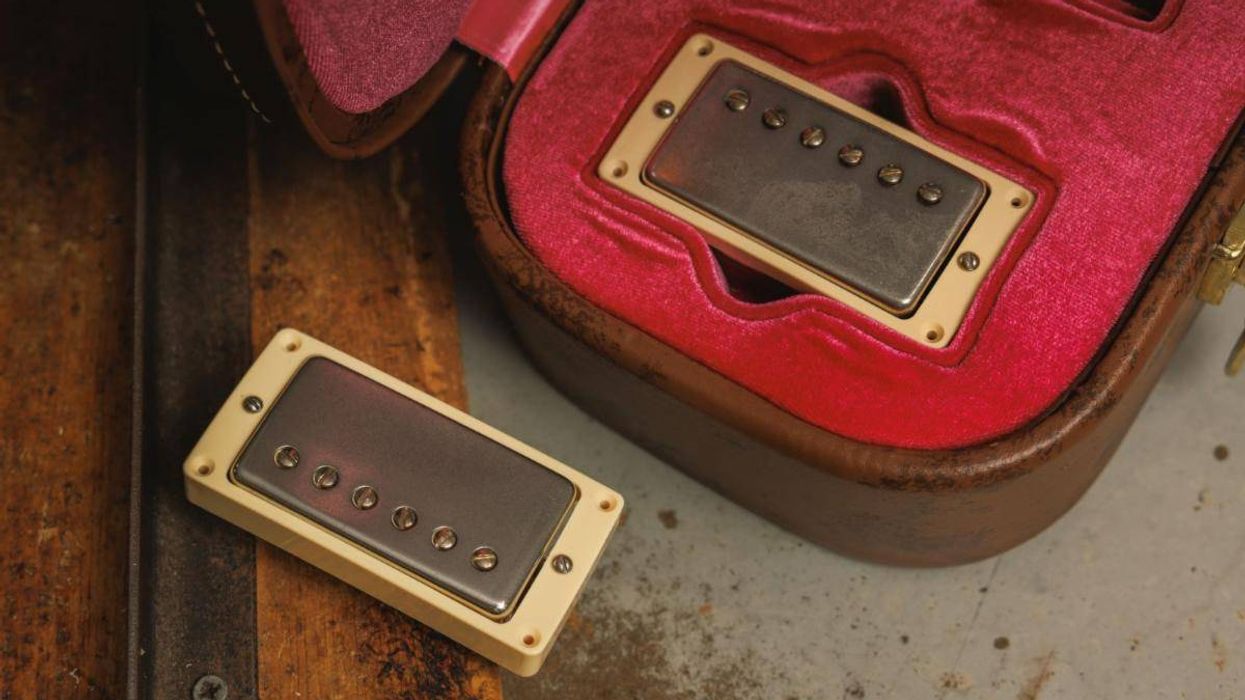
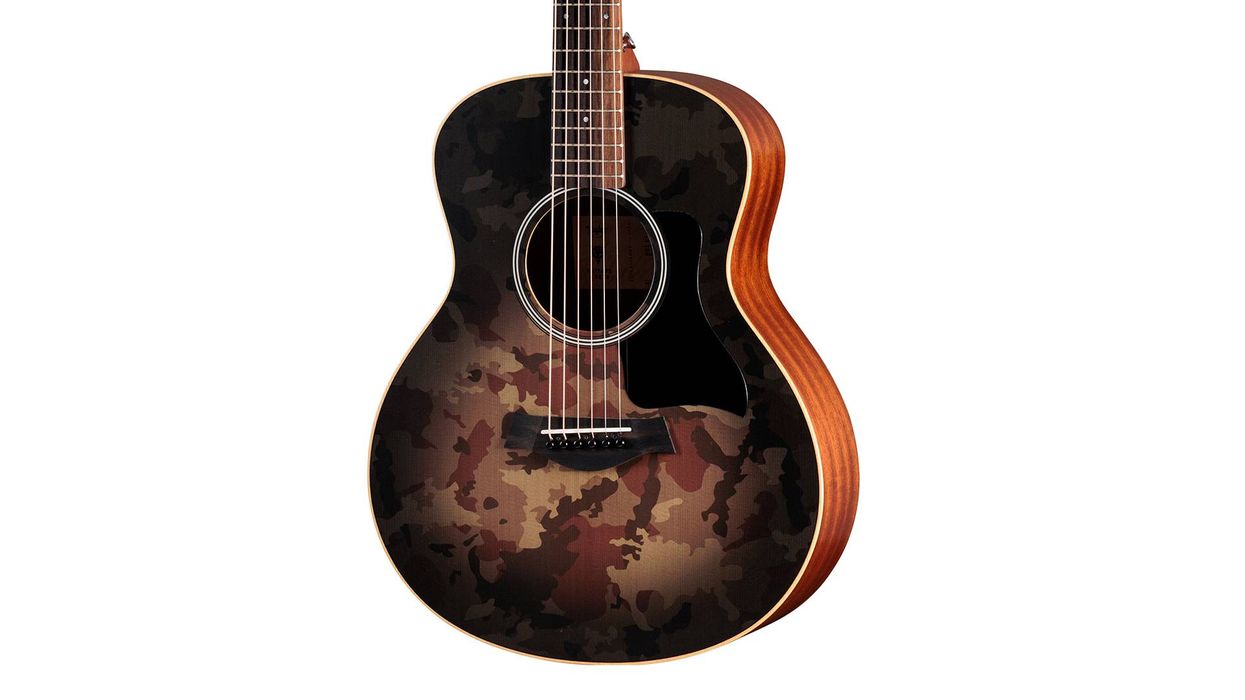


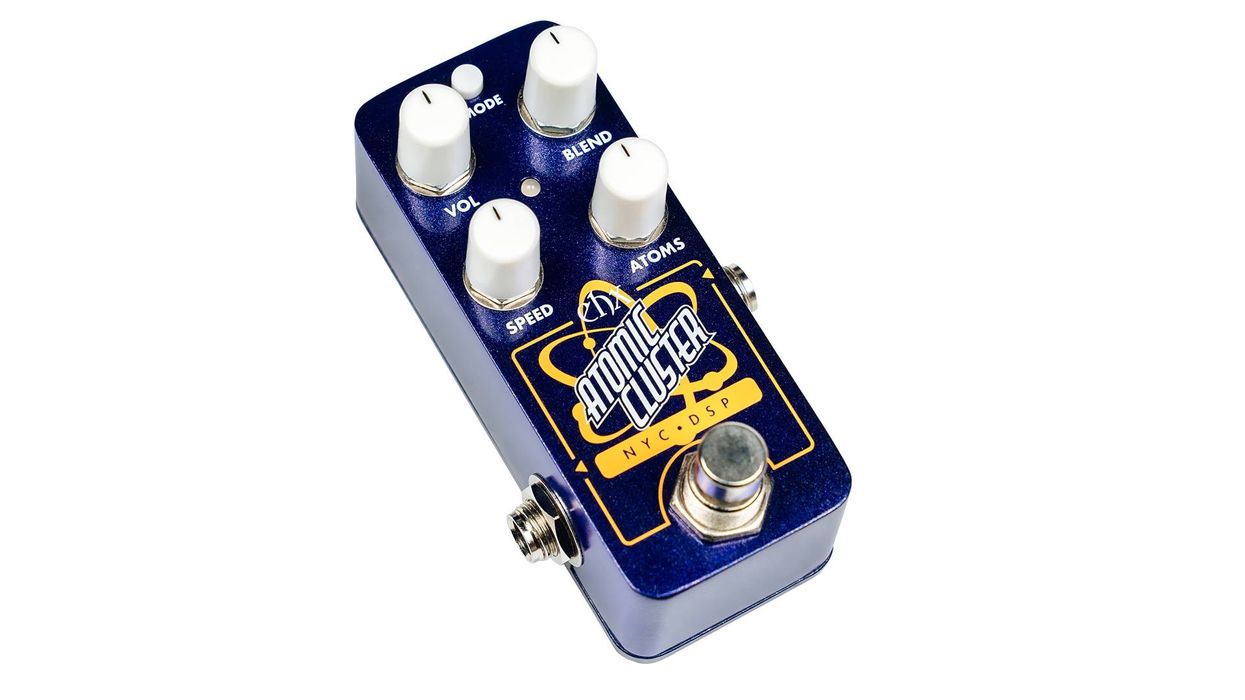













































![Rig Rundown: AFI [2025]](https://www.premierguitar.com/media-library/youtube.jpg?id=62064741&width=1245&height=700&quality=70&coordinates=0%2C0%2C0%2C0)












 Shop Scott's Rig
Shop Scott's Rig